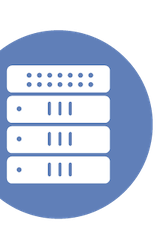Celona New Edgeless Architecture – Streamline On-Premises Footprint for Scale
Event: Mobility Field Day 13
Appearance: Celona Presents at Mobility Field Day 13
Company: Celona
Video Links:
- Vimeo: Celona New Edgeless Architecture – Streamline On-Premises Footprint for Scale
- YouTube: Celona New Edgeless Architecture – Streamline On-Premises Footprint for Scale
Personnel: Mark Jimenez, Puneet Shetty
Puneet provides an overview of our next breakthrough in Private 5G design — the “Edgeless” architecture, and MJ delivers a killer demonstration.
In this Mobility Field Day 13 session, Puneet Shetty introduced Celona’s new “Edgeless” architecture, a significant evolution in private 5G deployment aimed at reducing complexity and hardware overhead for enterprise customers. Traditionally, private 5G setups required on-premises appliances to host core services, resulting in racks of hardware and a heavier deployment model. Celona had already simplified this with a centralized Edge appliance, but the team identified that even this created friction. The Edgeless architecture eliminates the need for that appliance by redistributing essential services directly onto the access points and into the cloud. Critical data path functions, including L2/L3 integration and firewall/NAC interfacing, remain on-site at the access point, while cloud-based services handle control plane and spectrum management.
MJ demonstrated the new deployment model live, showcasing a fully functioning private 5G network powered by nothing more than a single PoE++-powered Celona access point plugged into a standard Ethernet connection. The hardware was designed with sufficient processing power to handle the additional microservices now required locally. This controllerless model echoes the familiar evolution of enterprise Wi-Fi, which transitioned from centralized controllers to fully cloud-managed, autonomous access points. The goal is to offer the same level of simplicity and scalability to private cellular networks, enabling quick deployment without additional on-premises infrastructure.
Celona expects this architecture to be especially attractive to large distributed enterprises managing numerous sites, each requiring just a few access points for coverage. By eliminating the need for local appliances, the Edgeless model simplifies management, cuts deployment timelines, and reduces friction without compromising security or performance. While advanced use cases like high-speed mobility may still warrant appliance-based edge deployments, the new architecture significantly broadens Celona’s addressable market. It aligns private 5G with the ease of Wi-Fi, and early customer feedback suggests growing interest and adoption. As Shetty noted, many potential clients are already delaying POCs to wait for Edgeless availability, viewing it as the future of enterprise private wireless.







